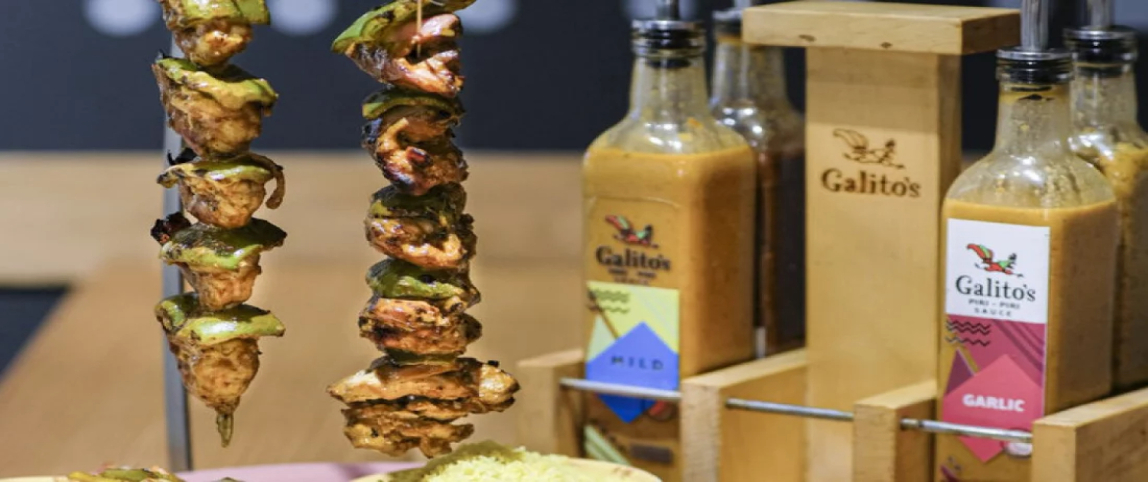Why Dhaka’s ‘peri peri’ Chicken has Roots in Portugal & It’s All About Globalisation, Stupid
TIM WORSTALL / Dhaka Tribune, Bangladesh | 30/10/2023
Text Size:
Perhaps someone who generally writes about economics should not be talking about a restaurant in Dhaka. And yet there's an economic story here -- as, of course, there's an economic story about everything. Economics is just one of the logical structures within which we describe human behaviour. I, of course, as someone who writes about economics would say the most important structure. Just as romantic poets would insist that love is the most important lens through which to view humanity. Or even, as those who have succumbed to romantic love and reached the squalling baby stage would insist a good night's sleep is that most important lens.
This paper recently reviewed Galito's peri peri chicken place. Despite my being as English as a pith helmet, I actually live in Portugal and the next village over from where I live is Guia. And that piri piri (note the spelling difference) chicken that we're talking about is, in Portuguese, “frango estilio de Guia.” Estilio, style, that should be simple enough. Frango is not, in fact, chicken, it's something closer to a bantam, a small chicken. Perhaps in modern language a broiler hen. A proper rural chicken, free range, is a galinha and the cooking recipes for one of those are quite different.
So, while you're all talking about peri peri chicken I'm thinking of the local style. Which is also the standard takeaway dish in this country of Portugal. The centrepiece of the cuisine is salt cod, bacalhau. To the extent that the language has no word for the fresh version of the fish -- it's necessary to use either the French (morue), or to say “salt cod fresh”, or “bacalhau fresca”. But the takeaway food is what Mum sends the kids out to pick up after a busy day and having found a bit of spare cash in Dad's pockets, is that frango piri piri.
Most of us are aware that the European voyages of exploration in the Middle Ages were to try to find a way to get to the spices of the East. Pepper, nutmeg, mace, cloves, and so on. Wars were fought over them as well. But one of the first that the Portuguese came across in their attempts to sail around Africa was the melegueta pepper in West Africa. This is before Columbus, slavery, etc, and trade was such that the area became known as the Grain Coast, because of the grains of this spice. Then Columbus happened and as part of that exchange the rest of the world got the chilli pepper. Yes, it's an American plant.
That piri piri, peri peri, is often known as the malagueta pepper -- as opposed to the habanero, jalapeno, or others. But it's a chilli, entirely unrelated to the melegueta (that is more closely related to ginger, as it happens). The chilli became wildly popular across Africa as it did across South and South-East Asia -- an interesting example of spice being imported into, not out of, the area.
We then add in the Portuguese Empire, which included Mozambique and Angola. Which, when they became independent overnight in 1974 -- the revolution in Portugal then meant an immediate end to the colonial wars to try to keep them -- became, how to put this, somewhat unruly? Which led to considerable emigration into South Africa. Which is why we all now -- outside Portugal that is -- associate chicken peri peri with South Africa. Nandos and Galitos are where we know it from.
And yes, there is an economic story behind this, it's the one of globalization. People in Dhaka are eating a recipe founded in the Portuguese experience, filtered through the Southern African empire of that country, based upon an American spice. And that's before we even get to chickens, a jungle fowl from SE Asia whose spread we know of in 1,500BC in Egypt, 500 BC in Greece, and more.
It's possible to carry on with the food idea, but only one more example -- vindaloo comes from the Portuguese “vin d'alho” which is garlic mashed with sour wine: Or as we also call it, vinegar. It's the vinegar that determines the vindaloo, supporting the chilli and garlic after all. All of this long before we start to talk of the potato, maize, tomatoes, rice (yes, there are two types, Asian and West African, different genuses) wheat and on and on.
Our very plates groan with the results of globalization. And yet there are those who really do keep insisting that international trade is a bad idea. That everything we consume at home should be made at home. That it would be bad to import things.
Well, yes, but what the heck is it that these economic nationalists eat?
This article was first published in Dhaka Tribune, Bangladesh
















